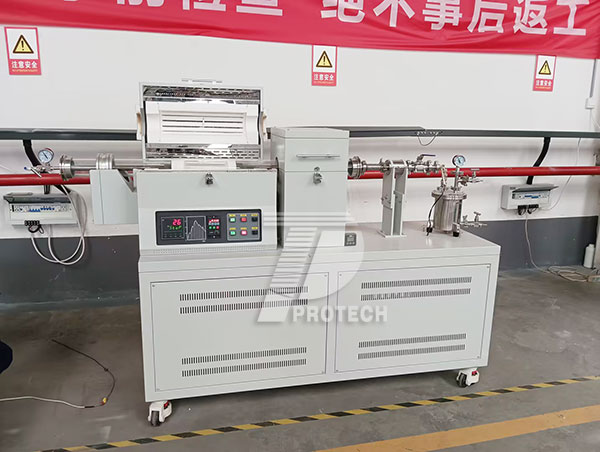


NEWS
Experimental rotary furnace, also known as rotary tube furnace, is a heat treatment furnace designed specifically for laboratories and widely used in multiple fields. Let's take a look at the specific application areas below!
In the field of chemical engineering, experimental rotary furnaces can be used to produce chemical products such as titanium chloride and aluminum chloride. By adding raw materials and reactants into the rotary furnace, and controlling the temperature and atmosphere conditions inside the furnace, chemical reactions and transformations of raw materials can be achieved. In addition, rotary furnaces can also be used for processes such as drying, dehydration, and roasting materials.
In the field of metallurgy, experimental rotary furnaces can be used for experimental research on the smelting and refining of metals such as iron, steel, copper, and aluminum. For example, in the process of steel smelting, a rotary furnace can melt raw materials such as blast furnace pig iron and perform carbon quenching and tempering to produce steel with a relatively uniform composition. In addition, rotary furnaces can also be used for experimental research on smelting other alloy materials, such as stainless steel, alloy steel, etc.
In the field of building materials, experimental rotary furnaces can be used to study the production process of cement clinker, lime and other products. For example, in the cement production process, a rotary furnace can burn the raw materials prepared by grinding into clinker at high temperatures, and then go through processes such as grinding and mixing to ultimately produce various grades of cement products. In addition, rotary furnaces can also be used to study the production process of building materials such as gypsum.
In the field of new energy, experimental rotary furnaces are particularly suitable for the preparation and processing of lithium iron phosphate battery materials and lithium-ion battery raw materials. They can also be used for the re oxidation of other inorganic materials and other fine particles. Due to its 360 degree rotation of the furnace tube and the ability to tilt the furnace body up and down, the material can be uniformly heated from top to bottom, making it particularly suitable for particle powder sintering in industries such as powder metallurgy, battery positive and negative electrode materials, refractory materials, and for measuring material properties under certain atmospheric conditions.
Aerospace field: Experimental rotary furnaces are also used in the aerospace field, mainly for heat treatment and performance testing of high-temperature materials.
In addition, the design of the experimental rotary furnace enables the material to be uniformly heated during the heating process, thereby improving the accuracy and reliability of the experiment. Meanwhile, due to its intelligent control system, it can effectively control temperature, atmosphere, heating rate, and insulation time to meet the needs of different experiments.

A commonly used experimental rotary furnace (click on the image to view product details)
Overall, experimental rotary furnaces have a wide range of application fields and important experimental value, and are important tools for researchers and engineers to conduct material research and product development. During use, it is necessary to follow safety operating procedures and pay attention to equipment maintenance and upkeep to ensure the safe and stable operation of the equipment.Click to learn more rotary tube furnaces! Or click on online customer service to learn more about product information!
Leave A Message